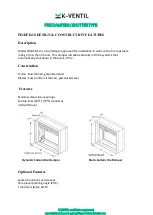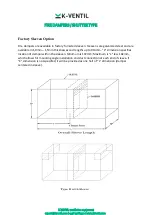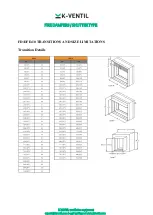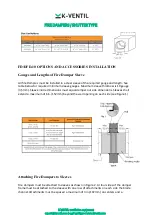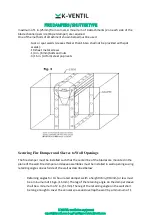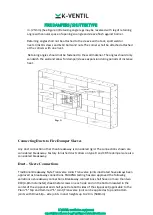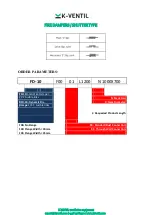
FIRE DAMPERS / SHUTTER TYPE
K-VENTIL ventilation equipment
[email protected] | +356 79667970 | www.kventil.com
in. (25mm).(See Figure 3).Retaining angle legs may be reversed with leg of retaining
angle with annular space of opening so angle and sleeve flush against barrier.
-
Retaining angles shall not be attached to the sleeve with a tack, spolt weld or
rivets.3/4x10 screws and 1x10 bolts and nuts.The corners shall be attached attached
at the corners with one rivet.
-
Retaining angles should not be fastened to the wall material. The angles should only
sandwich the wall and allow for damper/sleeve expansion during periods of instense
heat.
Connecting Ducts to Fire Damper Sleeves
Any duct connection other than breakaway is considered rigid. The connections shown are
considered breakaway. Factory furnished duct collars on type R and CR fire dampers are also
considered breakaway.
Duct – Sleeve Connections
Traditional Breakaway Style Transverse Joints Transverse joints illustrated have always been
approved as breakaway connections. SMACNA testing has also approved the following
variations as breakaway connections. Breakaway connections shall have no more than two
#10 (4.8mm diameter) sheet metal screws on each side and on the bottom located in the
center of the slip pocket and shall penetrate both sides of the slip pocket (applicable to the
Plain “S” Slip and Hemmed “S” Joint).Transverse joint can be applied as top and bottom
joints with Drive Slip – side joints in duct heights up to 20 in. (508mm)


